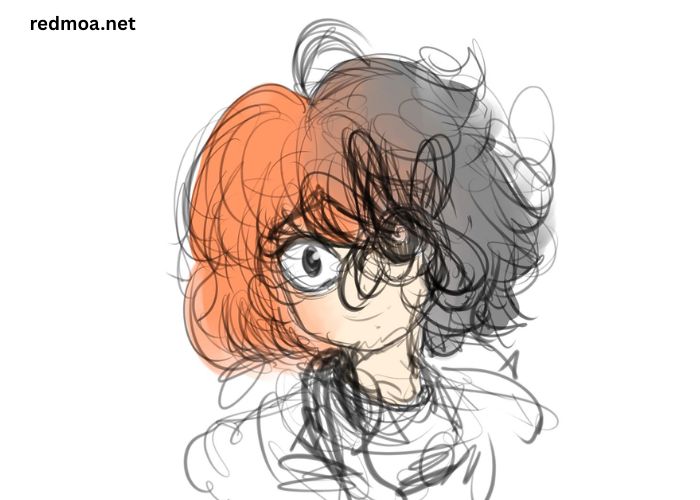In Japanese, communication is not just about words but also about emotions and expressions that convey how someone feels. One such phrase that often leaves non-native speakers scratching their heads is “Nandayo” (何だよ).
This phrase is frequently used in casual conversations and can be heard in many different contexts. But what does it really mean? When and how is it used? If you’re learning Japanese or planning to visit Japan, understanding the meaning and usage of “Nandayo” will help you communicate more naturally with locals.
Key Points to Remember:
- “Nandayo” (何だよ) means “What?”, “What the heck?”, or “What the hell?” in Japanese.
- It’s used to express surprise, confusion, or annoyance in response to something unexpected.
- The tone and context of the phrase can change its meaning significantly.
In this blog post, we will dive deep into the meaning of “Nandayo”, how to use it properly, and explore examples of how it is used in different situations. Whether you’re new to the language or just curious about this expressive phrase, you’re in the right place.
What Does Nandayo Mean in Japanese?
At its core, “Nandayo” (何だよ) is an informal expression used to show surprise, annoyance, confusion, or frustration. The word “Nanda” (何だ) translates to “What is” or “What the heck,” while “Yo” (よ) is a particle used to emphasize the sentence. The combination of these elements creates an exclamation that roughly means “What the heck?” or “What the hell?” in English.
“Nandayo” is commonly used in casual conversations, often when something unexpected or irritating occurs. It is not a polite phrase, so you should be careful when and with whom you use it. For example, if you are surprised by a friend’s sudden action or something strange happening around you, you might exclaim, “Nandayo?” to show confusion. Alternatively, it can be used to express annoyance, like when you’re frustrated with something or someone.
What Is the Context of Nandayo?
“Nandayo” is used in a variety of contexts, usually among friends or people you are close to. It is not typically used in formal situations or with strangers, as it may come off as too casual or even rude. Depending on the situation, the tone of your voice can change the meaning of the phrase. For example:
- Surprise: “Nandayo!” (What just happened?)
- Frustration: “Nandayo!” (What the heck? This is annoying.)
- Confusion: “Nandayo?” (What’s going on?)
Reminder: The tone of your voice is crucial when using “Nandayo”. Saying it with excitement may indicate surprise, while a more frustrated tone could convey annoyance.
How Do You Use Nandayo in Daily Conversations?
“Nandayo” is often used when reacting to something unexpected, confusing, or frustrating. You might hear it in scenarios like:
- Surprise: Your friend suddenly does something that catches you off guard, and you respond with “Nandayo?”
- Frustration: If you’re irritated by something, you might shout “Nandayo!” to express your annoyance.
- Confusion: If you don’t understand something, you may ask “Nandayo?” to express bewilderment.
Here’s an example of how it might be used in daily life:
- Friend 1: “I just booked a trip to Paris for next month!”
- Friend 2: “Nandayo! Why didn’t you tell me sooner?”
In this example, Friend 2 is expressing surprise and perhaps a little annoyance at being left out of the decision.
Note: It’s important to remember that “Nandayo” is informal, so don’t use it in situations that require respect or formality, like in business or with elders.
How Does Nandayo Compare to Other Japanese Expressions?
While “Nandayo” is commonly used to show surprise or annoyance, there are other similar phrases in Japanese that can express similar emotions. Let’s compare “Nandayo” with other expressions you might come across in the language:
| Expression | Meaning | Usage Context |
| Nandayo (何だよ) | What the heck? / What? | Informal, casual situations; surprise or annoyance |
| Nani (何) | What? | Casual and neutral; typically used in a question |
| Baka (馬鹿) | Idiot / Fool | Informal and rude; frustration, anger |
| Hontou (本当) | Really? | Expressing disbelief or surprise |
While “Nandayo” is used when you’re surprised or annoyed, other expressions like Nani (What?) are more neutral and can be used in a wider variety of situations. On the other hand, phrases like Baka (Idiot) are much ruder and should be used with caution.
Reminder: If you’re unsure about the tone or context, it’s always a good idea to use more neutral expressions like “Nani” or “Hontou” until you are comfortable with casual or informal speech.
When Should You Avoid Using Nandayo?
Because “Nandayo” is informal, you should avoid using it in professional settings or when speaking with people who are older or of higher status. It can come off as rude or disrespectful in these situations. Additionally, it’s best not to use it in serious or emotional conversations, as it may trivialize the situation or make others feel uncomfortable.
Here are some examples of when you should avoid using “Nandayo”:
- In a business meeting: It’s best to stick to more formal language in professional settings.
- With older individuals: If you’re speaking with someone who is significantly older than you, using “Nandayo” may come across as disrespectful.
- During serious conversations: If someone is explaining something important or emotional, using “Nandayo” could appear dismissive.
In these situations, it’s better to use other phrases or expressions that are more polite and neutral, like “Nani desu ka?” (What is it?), or simply remain quiet and listen.
Conclusion
“Nandayo” (何だよ) is a useful and expressive phrase in Japanese that can convey surprise, frustration, or confusion, depending on the context and tone. However, because it’s informal and can sometimes sound rude, it’s important to use it only with close friends or in casual situations. By understanding the meaning and usage of “Nandayo”, you can add a natural touch to your Japanese conversations and better express your emotions when speaking the language.
Before using this phrase, always consider the context, the relationship you have with the person you are speaking to, and the tone of your voice. With the right balance, “Nandayo” can be a fun and effective way to react to the unexpected in Japanese.
FAQ’s
- What does “Nandayo” mean in Japanese?
- “Nandayo” (何だよ) is a Japanese expression that means “What the heck?” or “What the hell?” and is used to show surprise, annoyance, or confusion.
- “Nandayo” (何だよ) is a Japanese expression that means “What the heck?” or “What the hell?” and is used to show surprise, annoyance, or confusion.
- Can I use “Nandayo” with strangers?
- It is best not to use “Nandayo” with strangers or in formal settings, as it is informal and can come across as rude.
- It is best not to use “Nandayo” with strangers or in formal settings, as it is informal and can come across as rude.
- When should I use “Nandayo”?
- You can use “Nandayo” in casual conversations with close friends or when you are surprised, confused, or annoyed.
- You can use “Nandayo” in casual conversations with close friends or when you are surprised, confused, or annoyed.
- How is “Nandayo” different from other Japanese expressions?
- “Nandayo” is more expressive and informal, whereas other expressions like “Nani” (What?) are more neutral and can be used in a wider variety of situations.
- “Nandayo” is more expressive and informal, whereas other expressions like “Nani” (What?) are more neutral and can be used in a wider variety of situations.
- Is “Nandayo” always used in negative situations?
- Yes, “Nandayo” typically expresses negative emotions such as surprise, confusion, or frustration. It is not used in positive or neutral contexts.





